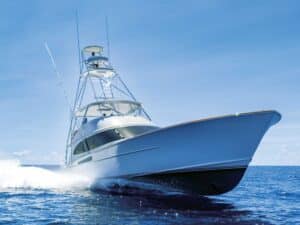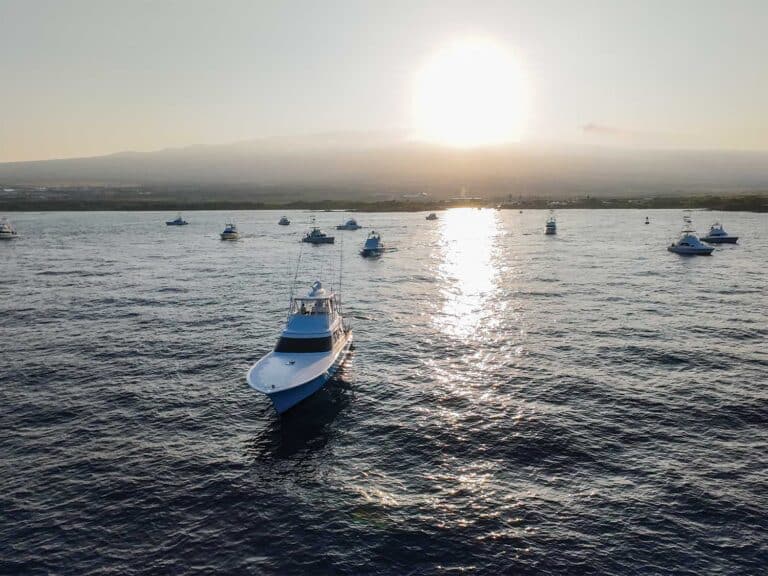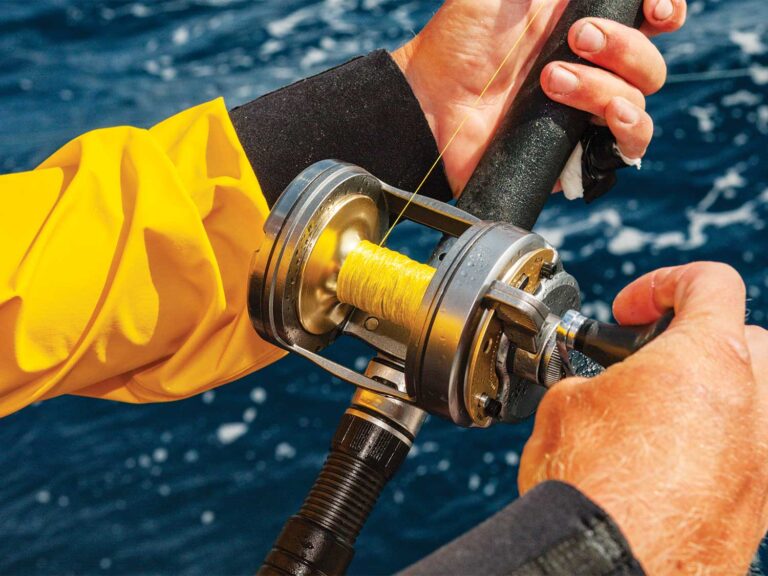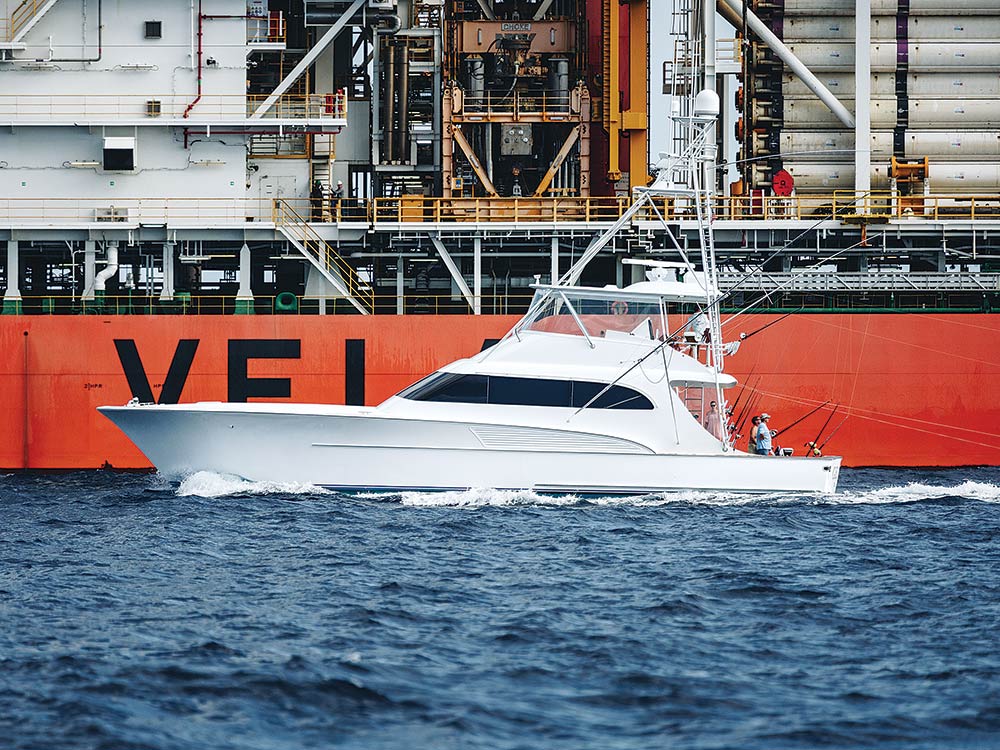
Twice a year, we go through all the safety gear on our boats. We are not accident prone or nervous: We do this because it’s good practice to keep all the gear up to date, clean, in good working order and easily accessible when we need it. Bad things never seem to happen when conditions are ideal, and some recent occurrences have also sent me searching for something better to have in our bag of tricks. I would much rather be preventive and not reactive in an emergency situation, should something unfortunate come our way.
The Throw Raft
For the longest time, the only thing to throw that was U.S. Coast Guard-approved was a life ring or square throw cushion. Few boats are really set up properly with an easily accessible ring or throw rope to attach for retrieval. And throwing lightweight square cushions is a futile exercise if you’ve ever tried, since they are very susceptible to the breeze and rarely end up where you want them to land. They are nearly useless in heavy weather or a rapidly escalating emergency situation.
However, it took a survivor — yacht captain Troy Faletra of Fort Lauderdale, Florida — to invent a clever and practical piece of gear that is U.S. Coast Guard-approved as a Type IV Throwable PFD. His company is called Throw Raft, and it manufactures the TD2401, an ingenious, well-built inflatable flotation device that can be thrown about 40 feet or so, depending on who is doing the throwing. It can be thrown whether it is inflated or packed; obviously, when packed, it will go much farther.
There are more than 35 tests that a device must pass in order to be approved by the U.S. Coast Guard, including puncture resistance, a drop test, grab-strap tensile strength, throw test, water-spray test, uninflated buoyancy test and rearm and repack tests — just a few of the vigorous criteria the TD2401 had to go through to gain approval.
The TD2401 fits in a ditch bag, a backpack or its own UV-resistant mountable case that also protects the unit from the elements when mounted on deck or on the bridge. According to the company, when packed, it is nine times smaller than a ring buoy and five times smaller than a square cushion. Its yellow material with reflective tape increases search-and-rescue visibility.
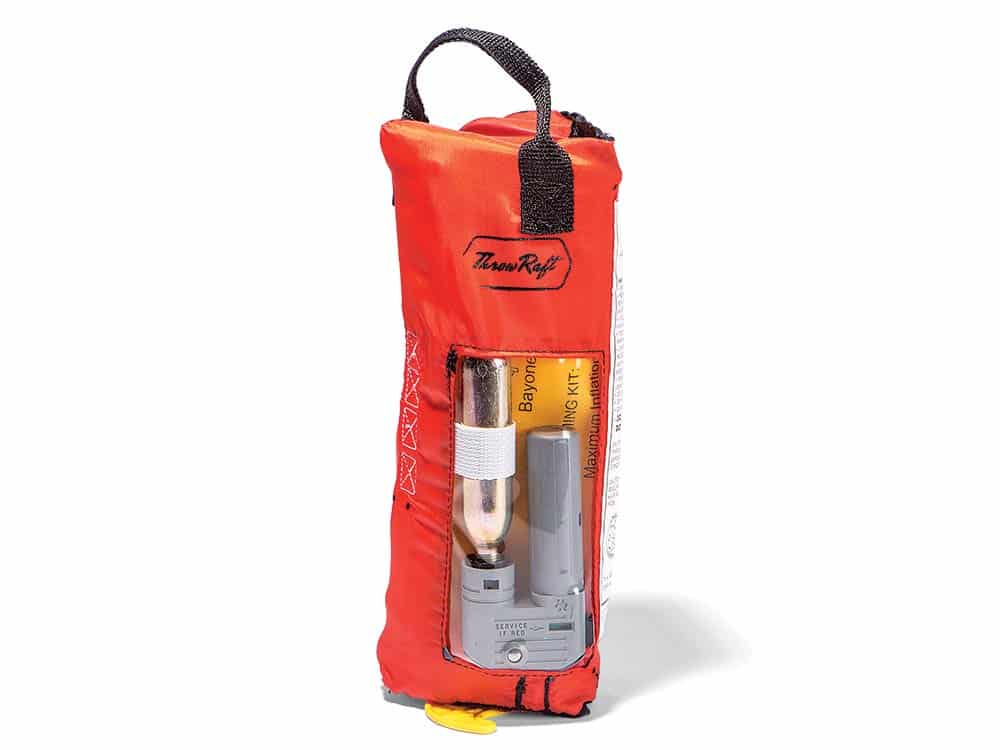
The TD2401 Throw Raft automatically inflates upon submersion in water and is also reusable thanks to its 24-gram CO2 cylinder. The cylinder is easily rearmed using a bayonet mount that is packed in its own safety pouch attached to the unit. The TD2401 can be folded and repacked for measurable space savings. When packed, the unit measures 11-by-4 inches, and it inflates to 22-by-21 inches. The MSRP for the TD2401 is $149.99; the TD2401 mounting case can be mounted in any number of places and is $84.99.
Throw Raft also makes the Survivor, which is a larger version of the TD2401. When inflated, it is 42-by-28 inches, much like a personal raft. The Survivor is made of the same durable and puncture-resistant high-visibility material with reflective tape strips, making it a larger target for search-and-rescue efforts. It has high-strength grab ropes attached to both sides, along with a whistle and a manual inflation tube at the top. It is also packed in its own pouch with a larger 84-gram CO2 activation cylinder. The Survivor is an excellent complement to a PFD because it can be floated on, reducing fatigue from treading water. It is only 2.5 pounds and is extremely compactable to stow in a ditch bag or backpack. The Survivor retails for $229.99.
Yacht Preserver
Earlier this year, my friend Capt. Jason Pipe, from La Gomera in the Canary Islands, had a major failure and lost his well-known 35-foot Bertram, Bocinegro. In spite of an incredible effort to secure the situation and save the boat, Pipe was unable to ascertain from where the incoming water was coming and, ultimately, Bocinegro succumbed to the flooding. He said it all happened in less than 10 minutes.
This is not a case of poor maintenance or lack of safety preparation. Pipe and his crew are as salty as they come and were able to get everyone aboard safely off the boat. In hindsight, he is sure the water ingress came from the exhaust, primarily the rubber-hose section that connects the exhaust to the boat-exhaust tube. The amount of water coming in through that 12-inch hole was overwhelming for the 3,800- and 2,000-gallons-per-hour pumps he had in his bilges.
We will never know, but perhaps the only thing that could have saved Bocinegro is a clever new product called the Yacht Preserver. Developed by a boat captain, the Yacht Preserver Emergency Kit comes complete with a single-use, self-deploying inflatable seal, CO2 cartridge and triggering lanyard, a 24- to 48-inch extendable placement handle, and a self-contained carrying case.
The Yacht Preserver looks like a tube fender but is inflated with a CO2 cartridge once it’s placed in the hole you need to fill. The Yacht Preserver comes in several sizes designed to fill spaces from 2 to 4 inches up to 15 to 16 inches in diameter. They fit not only circular spaces but also oblong and irregular shapes to block incoming water.
To use the Yacht Preserver in an emergency, remove the handle and pouch from the carrying case, attach the placement handle to the pouch, extend to full length, place the Yacht Preserver into the desired through-hull exhaust port or hull breach, and pull the lanyard. Much like inflating a life raft or PFD, it will inflate and seal the hole in seconds.
The beauty of the Yacht Preserver is that it can also be taken underwater to secure a breach in the hull, should there be full impact with a submerged piece of flotsam that punctures the hull. It might not work on all ingress punctures or cracks, but it will work on many.
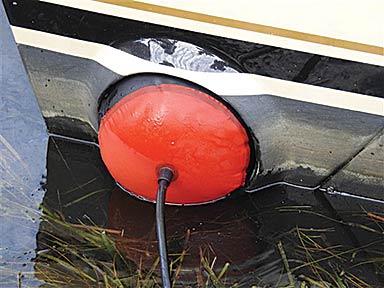
The Mechanical Yacht Preserver Kit is similar to the Yacht Preserver except that it is reusable, and it is a perfect solution for sealing exhausts while doing engine or exhaust riser rebuilds to keep water from coming up through the exhaust and into the boat. The Mechanical Yacht Preserver flexible seal also fills holes from 2 to 16 inches and comes with a 7-foot section of hose with a shut-off valve that can be connected to any air hose and inflated once the unit is placed in the exhaust.
Safety is often an overlooked subject. These products are designed to help you handle an emergency situation, and could possibly save someone’s life. Bad things rarely happen when you expect them, so being prepared and having a clear plan — and the tools to execute the plan — will help you immeasurably when things get bad. You also might avoid a terrible loss, like what happened to my friend Capt. Jason Pipe.



